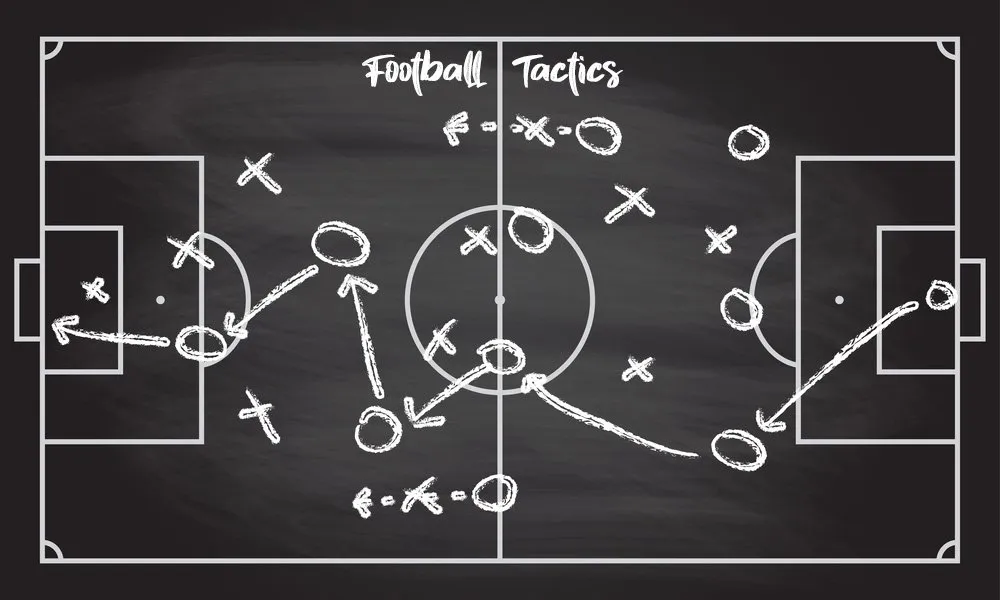
The Art & Algorithm: Unpacking Football’s Dribbling Maestros in 2025 Through Advanced Analytics
Football, at its heart, is a game of skill, passion, and moments of individual brilliance that defy tactical rigidity. Among these moments, the dribble stands supreme – a player, ball glued to their feet, gliding past opponents, creating space out of nothing, and turning defense into attack in a flash. It’s the purest expression of individual genius, capable of igniting a stadium and changing the course of a match. As we step into 2025, the magic of the dribble remains undiminished, yet our understanding and evaluation of it have evolved dramatically, propelled by the relentless march of data analytics and artificial intelligence.
Gone are the days when a successful dribble was merely a subjective “eye test.” Today, and even more so in 2025, the art of dribbling is meticulously dissected, quantified, and contextualized by algorithms that reveal not just who dribbles, but how, where, why, and with what ultimate impact. This article delves into the fascinating world of dribbling statistics in 2025, exploring the advanced metrics, the dominant players, and the tactical shifts that define this crucial facet of the beautiful game.
The Evolving Art of Dribbling: Purpose Over Prowess
In 2025, the tactical landscape of football is more sophisticated than ever. High-pressing systems, compact defensive blocks, and sophisticated counter-attacking strategies mean that space is a luxury. This scarcity of space elevates the importance of the dribbler. No longer is dribbling just about beating a man; it’s about breaking lines, disrupting defensive structures, creating passing lanes, and generating high-value attacking opportunities.
The archetypal dribbler of 2025 is not just a showman but a highly effective, purposeful player. They understand when to commit to a dribble, when to hold the ball, and when to release it. Their dribbles are often executed in tight spaces, under immense pressure, and are designed to unlock defenses rather than merely entertain. This tactical emphasis means that raw dribble volume is less important than dribble efficiency and impact.
The Data Revolution: Beyond Simple Success Rates
The core of understanding dribbling in 2025 lies in the advanced metrics that have moved far beyond simple “successful dribbles per 90 minutes” or “dribble completion percentage.” While these foundational metrics still exist, they are now just the tip of the iceberg. Here’s a look at the sophisticated analytics dominating dribbling evaluation:
- Expected Dribble Value (xDV): Building on the concept of Expected Goals (xG), xDV assigns a value to each dribble based on the increase in probability of a shot or a dangerous attacking sequence occurring as a direct result of that dribble. Factors like the dribble’s location (e.g., dribbling into the box is higher xDV than dribbling on the touchline), the number of opponents bypassed, and the subsequent action (shot, key pass, pre-assist) contribute to this metric. A player with high xDV per dribble is a true game-changer.
- Pressure-Adjusted Dribbles (PAD): This metric accounts for the defensive pressure a player is under when attempting a dribble. Using player tracking data and pressure events, PAD differentiates between a dribble attempted in open space versus one performed while double-marked in a crowded penalty area. A player with a high PAD success rate is deemed elite, demonstrating exceptional ball control and composure under duress.
- Progressive Dribble Yards (PDY) & Progressive Carries into Final Third/Box: This has been evolving for years but is now a cornerstone. PDY measures the total distance a player moves the ball towards the opponent’s goal through dribbling, excluding sideways or backwards movements. Specific metrics like “carries into the final third” or “carries into the penalty box” highlight players who consistently advance play into dangerous areas.
- Dribbles Leading to Shot/Key Pass/Foul Won: This context-specific metric filters dribbles by their direct outcome. It highlights players whose dribbles consistently lead to tangible attacking opportunities or draw fouls in advantageous positions (e.g., on the edge of the box for free-kicks).
- Dribble Zone Analysis: Advanced mapping tools categorize dribbles by the area of the pitch they occur (e.g., wide channels, central midfield, defensive third). This helps identify specialists (e.g., wingers who excel in wide areas) and versatile dribblers who can operate effectively across the pitch. It also helps coaches understand where their players are most effective at breaking lines.
- Opponent Engagement Rate (OER): This metric assesses how many opponents a dribbler attracts and commits, thereby freeing up space for teammates. A high OER indicates a player who is not only dangerous individually but also tactically valuable, as they pull defenders out of position, creating numerical advantages elsewhere on the pitch.
These metrics, powered by vast datasets and machine learning algorithms, provide a far more nuanced picture of a player’s dribbling prowess, allowing scouts, coaches, and analysts to identify true talent and tactical impact.
Who Will Dominate the Dribbling Charts in 2025?
Predicting individual dominance in football is always challenging, but based on current trajectories and the evolving nature of the game, several players are poised to lead the dribbling revolution in 2025:
- Vinicius Jr. (Real Madrid): Already a force in 2023-2024, Vinicius Jr.’s combination of explosive pace, close control, and courage to take on defenders makes him a prime candidate. By 2025, his decision-making in the final third will likely be even more refined, translating into higher xDV from his numerous progressive dribbles. His ability to operate effectively under pressure (high PAD) will set him apart.
- Jamal Musiala (Bayern Munich): The German sensation possesses an uncanny ability to glide past opponents in central areas. His low center of gravity, quick changes of direction, and spatial awareness allow him to navigate crowded midfields. In 2025, Musiala’s xDV will be exceptionally high as he consistently dribbles into dangerous zones and directly contributes to goal-scoring opportunities, often attracting multiple defenders (high OER).
- Rafael Leão (AC Milan): The Portuguese winger’s blend of raw power, deceptive speed, and silky dribbling makes him a nightmare for defenders. His progressive dribbles from wide areas, often leading to shots or crosses, will continue to be a key weapon. By 2025, expect Leão to refine his efficiency, converting more of his high-volume dribbles into critical attacking actions.
- Bukayo Saka (Arsenal): Saka’s intelligent dribbling, combining feints with bursts of acceleration, makes him incredibly effective on the right flank. He consistently draws fouls in dangerous areas and creates space for his teammates. In 2025, his Dribbles Leading to Key Pass/Shot will be among the league’s best, reflecting his direct impact on goal creation.
- Rodrygo Goes (Real Madrid): Often overshadowed by Vinicius Jr., Rodrygo is an incredibly effective and efficient dribbler, particularly in tight spaces. His composure under pressure and ability to cut inside make him a consistent threat. His xDV will be consistently high due to his clever movement and direct approach to goal after beating a man.
- Emerging Talents: Keep an eye on younger talents from academies across Europe and South America. Players like Arda Güler (Real Madrid), with his exceptional close control and vision, and Lamine Yamal (FC Barcelona), already showing incredible promise, are poised to become statistical leaders in the years to come, provided their development continues unhindered. Their tactical intelligence in choosing when and where to dribble will be key to their success in the data-driven landscape of 2025.
Challenges and Counter-Strategies
The rise of data analytics doesn’t just benefit the dribbler; it also empowers defenders and coaches. Defensive units in 2025 are increasingly data-informed, using predictive analytics to anticipate dribbling patterns and devise effective counter-strategies. AI-driven scouting reports provide detailed insights into individual dribblers’ preferred moves, strong and weak sides, and tendencies under pressure. This leads to:
- Targeted Double-Teaming: Defenders are more efficiently deployed to cut off dribbling lanes or double-team key threats.
- Forced Errors: Defenses aim to funnel dribblers into less dangerous areas or force them onto their weaker foot.
- Tactical Fouling: While controversial, professional fouls to stop progressive dribbles remain a calculated risk for many teams.
This constant push-and-pull between attacking brilliance and defensive strategy ensures that the evolution of dribbling is a dynamic process, where innovation is met with adaptation.
The Future of Dribbling Analytics
Looking beyond 2025, dribbling analytics will become even more integrated into broader tactical models. We can expect:
- Predictive Dribble Outcomes: AI models that can predict the probability of a successful dribble before it happens, based on player positioning, momentum, and defensive setup.
- Biometric Data Integration: Real-time analysis of a player’s fatigue levels, heart rate, and movement efficiency to understand how physical state impacts dribbling effectiveness.
- Virtual Reality Training: Personalized VR simulations for players to practice dribbling against AI-generated defensive patterns, informed by their own statistical data.
Conclusion
In 2025, the dribble remains football’s most exhilarating individual action, a testament to skill, bravery, and creativity. While the raw, unquantifiable joy of watching a player effortlessly glide past opponents will never diminish, our understanding of this art form has been revolutionized by advanced analytics. Metrics like xDV, PAD, and PDY provide unprecedented depth, allowing us to appreciate not just the aesthetic beauty but also the profound tactical impact of every successful take-on.
The players who will define dribbling in 2025 are those who marry breathtaking skill with strategic intelligence, using data-driven insights to maximize their impact. As the game continues its relentless march forward, the symbiotic relationship between human artistry and algorithmic understanding will only deepen, ensuring that the magic of the dribble remains at the very heart of football.


